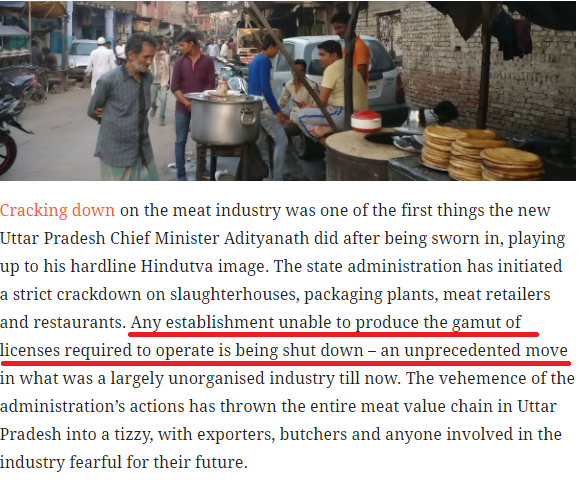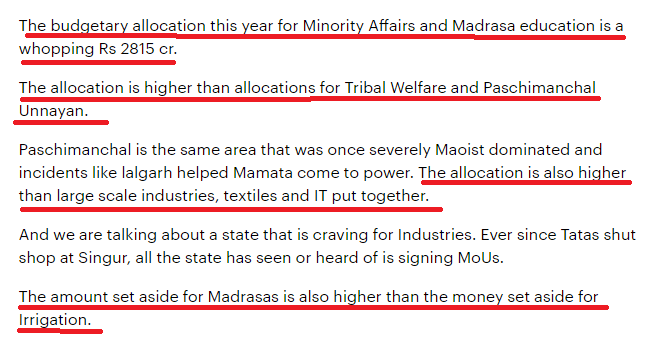11th March 2017. That’s a date Arvind Kejriwal will never forget. It’s a date that seems to have impacted him significantly and his public display of affection for Prime Minister Narendra Modi has been conspicuously missing since then. From daily basis insinuations, there’s a discomforting quiet from his Twitter handle since this fateful date.
If you have hated his theatrics, you will find it difficult not to mock his divorce with Modi. Even the national and mainstream media seem to have stopped romanticizing him now. His attempt to share the blame of inaccurate poll surveys in Goa and Punjab on journalists like Prannoy Roy and Shekhar Gupta threw more ice over a dying fire.
The Assembly elections setback isn’t a minor or a temporary crisis for Kejriwal and his Aam Aadmi Party (AAP). As captain of the ship, he has not just steered his party into a storm. But worse, he has invited a storm to rock his ship. Whether he corrects his course or not, his and his party workers’ existence is in threat.
He has a tough task cut out – that of reshaping his political career and saving his party. Winning MCD elections in Delhi may be just one step forward in an impossible journey of thousands of miles to go.
As he gazes into this gloomy future, he must be reflecting on strategic choices he made when AAP was at its peak – when it won Delhi 2015 assembly elections bagging 67 out of 70 seats. This was a year after the commendable performance in Lok Sabha 2014 elections – 4 seats from Punjab with 30% vote share and a 34.9% vote share but no seats from Delhi.
At this juncture, it was crucial where AAP would put its immediate focus on for the next 30 months. As the non-corrupt alternative to Congress, he would require a great stint as Delhi Chief Minister and strengthening of AAP’s base in other states to stay true to his national ambitions.
But he was in no mood to gradually build the party as it would take decades to do so. Too ambitious to let anyone else overpower him, he was (is) eyeing the post of Prime Minister for himself by 2019 or in worst case by 2024. To do that, winning assembly elections in at least 2 major states by 2017 was the least he would need.
As he looked at the 27 states of India for AAP’s entry, he would need to choose his battles i.e. states carefully. Here is a possible sequential elimination process he would have used to identify these priority states:
- Is the state going to polls before end of 2017?
- If yes, is the state relevant enough for national presence? (Outcome to efforts ratio is likely to be less in North Eastern states due to ‘tyranny of distance’ and national visibility a party can gain from there. Also, except Delhi, AAP wouldn’t want to win another UT).
- Is Congress one of the largest parties in these states? (AAP’s best bets lay in grabbing vote share from Congress aided by his and AAP’s positioning).
- Is the state a contest between Congress & BJP? (Since AAP’s another area of opportunity lied in being a part of the 3rd front, it wouldn’t want to antagonize any potential Mahagathbandhan members. So he would rather pursue Bihar, UP, West Bengal, Kerala, Tamil Nadu, etc. on a more opportune date).

If we put the 12 states going to assembly polls from 2015 to 2017 through this test, 5 of them fit the bill well – Goa, Punjab, Uttarakhand, Gujarat, and Himachal. If one looks back AAP’s actions post 2015, the above choice appears quite obvious.
There were state specific factors to further justify AAP’s entry there. Punjab was a no-brainer, given the encouraging performance in Lok Sabha 2014, Delhi neighborhood effect and the fact that Punjab has always voted out the incumbent for a foreseeable past. AAP’s primary opposition in Assembly 2017 was Congress here, not SAD or BJP.
In Goa, with Parrikar moving to the center, a leadership gap in the Goa BJP coupled with a dominant Christian population (potential anti-BJP vote bank) gave an indication that the state was ripe for shift of power away from BJP.
Gujarat BJP seemed to be weakening under Anandiben Patel as Modi and Amit Shah focused on national politics. AAP had joined hands with Congress and JD(U) in the lead up to the Bihar assembly elections to fuel the Patel agitation. Kejriwal wouldn’t want to part with this opportunity to win votes from the powerful Patidar community.
Strategy is not just what you choose to do. It’s also about what you choose not to do. Kejriwal had by the above choice decided not to pursue assembly elections in some large states like UP, Bihar, West Bengal, Kerala and Tamil Nadu. Other large states like Karnataka, Chhattishgarh, Madhya Pradesh and Rajasthan go to assembly polls too close to 2019 general elections and hence investment by himself or of local leadership on these doesn’t seem to have made sense to him.
These choices were hedged on the probability that Kejriwal would win a couple of states to display his own (and not AAP’s) growing popularity in the run up to 2019. These choices came with the opportunity cost of not investing in ground level party framework across the country. His choice of promoting himself came with the cost of not developing a well-organized party that could nurture a leadership capable enough to be delegated with the task of further expansion.
Did the strategy deliver? Obviously not.
His struggle to manage Delhi notwithstanding, he hit the axe on his own foot by confronting Modi directly on issues where he had little chance of winning. Name calling, shooting and scooting, and attacking Modi on his performance as Prime Minister were the tricks he deployed to get Modi to engage with him and to secure elevation of his own stature in national politics.
While it was imperative for him to get this stature, he was always walking on a tight rope in the manner he chose to do so. Modi himself has an unshakeable image of an incorruptible, nationalist and pro-governance leader making it difficult for Kejriwal and AAP to get their positioning in this space. The plank of secularism wasn’t going to work in any of the chosen states, except maybe in Goa.
Meanwhile, party’s volunteers and regional leadership had started losing faith in Kejriwal. Exodus of clean leaders from AAP, involvement of the unclean ones in cases of graft or misrepresentation and his own dictatorial tendencies were denting his image further. What ensued in states other than the 5 priority ones – in the form of disenchantments, split-ups, etc. was nothing but an outcome of AAP central leadership’s choices.
The debacle that came on to AAP in March 2017 is thus a culmination of several of the above factors. What it leaves with Kejriwal will definitely be worrying him. While some of his staunch supporters still remain, the fence sitters and the swing votes now see him as an anarchist and an untrustworthy leader who is power hungry like any other politician.
This doesn’t help when the aspirational youth of the nation started losing conviction in his governance abilities. While the country is seeing a rejuvenated nationalism and Hindutva wave, his choice of ideology, siding with those perceived as anti-nationals or “pseudo seculars” and with extremist forces in Punjab, has left him with little room for redemption.
Today in March 2017, his plans for 2019 are more or less shelved. There is no state that he can choose now to enter and win votes & seats from. He will have to enter 2019 elections without any administrative experience to showcase, and his promises are no more selling like hotcakes.
Nothing is impossible or improbable in politics. But a Kejriwal government at the center in 2019 is. His journey from Bunglow No. 6, Civil Lines to 7, Jan Kalyan Marg suddenly seems decades long if not eternal.
So, what does he do now? Simple, he should look beyond 2019. If he can.
Having reconciled to the fact that he won’t be a significant force over the immediate years, he needs to introspect and build himself again from scratch in a few major states, be content to sit in opposition in these assemblies and eye for 2024 Lok Sabha – as a contributing and not leading member of a Third Front.
Even if he accepts this as his 5 year objective, can he actually achieve it?
Having bathed in the media glare, can he swallow the bitter pill that he will be a nobody in the Indian polity for the next 5 years? Can he plan for a long drawn battle that needs keeping his volunteers and the AAP organization together? Can he motivate himself and his teams to continue working when the BJP is giving nightmares to parties much larger than AAP? Can he manage funds when donations to his party are declining day by day? Can he deliver on governance as promised to the Delhi people while continuing being acerbic with central government? Can he allow dissenting voices of AAP’s well-wishers be heard to course correct?
If we were to poll answers to these questions from public, Nays will outnumber Ayes. I belong to the majority in this poll.
Captain Kejriwal has hit the iceberg, and Titanic AAP is sinking.

























